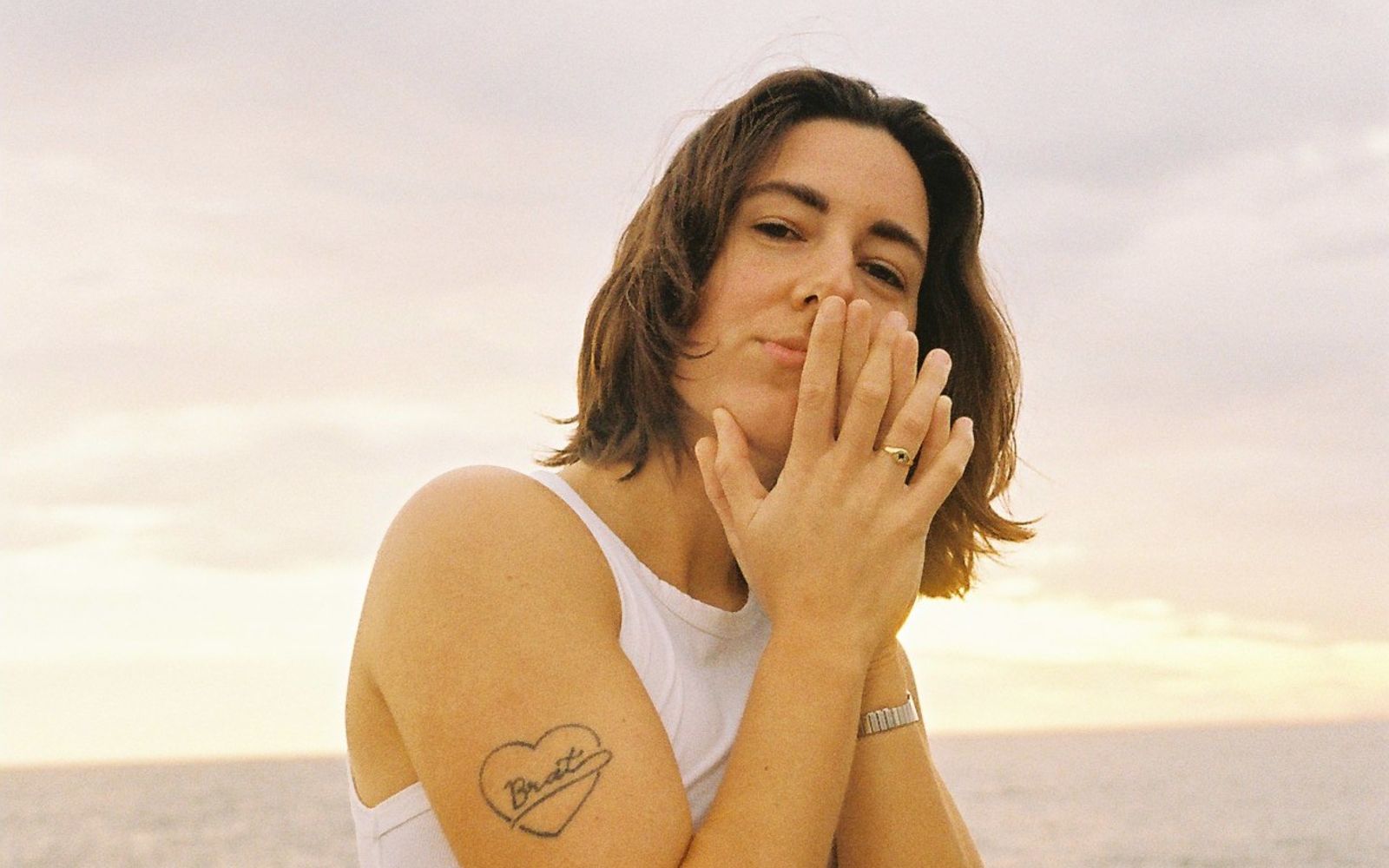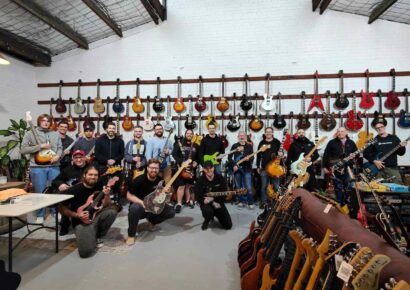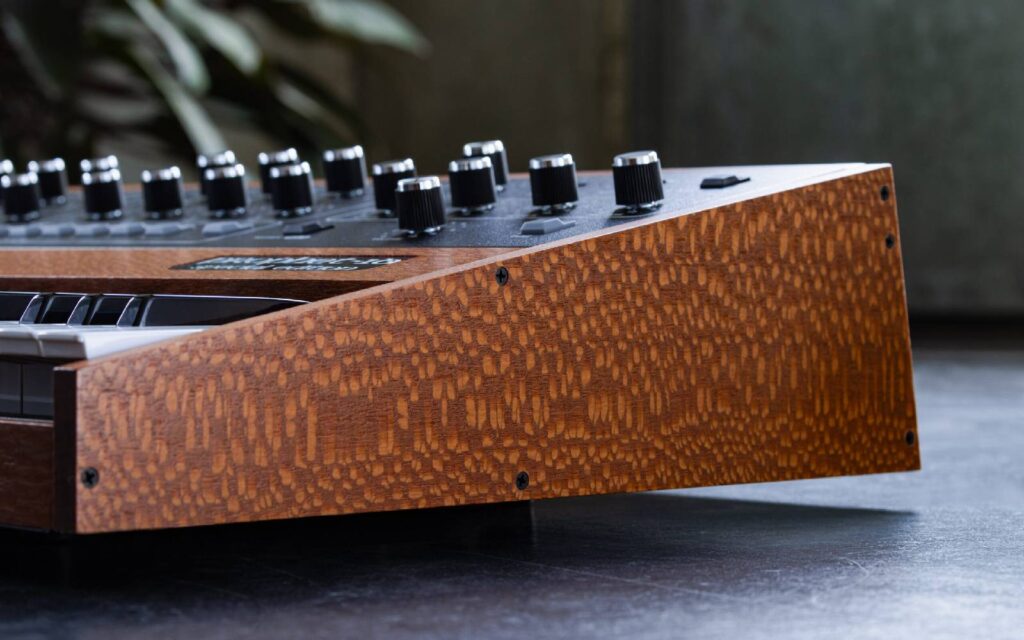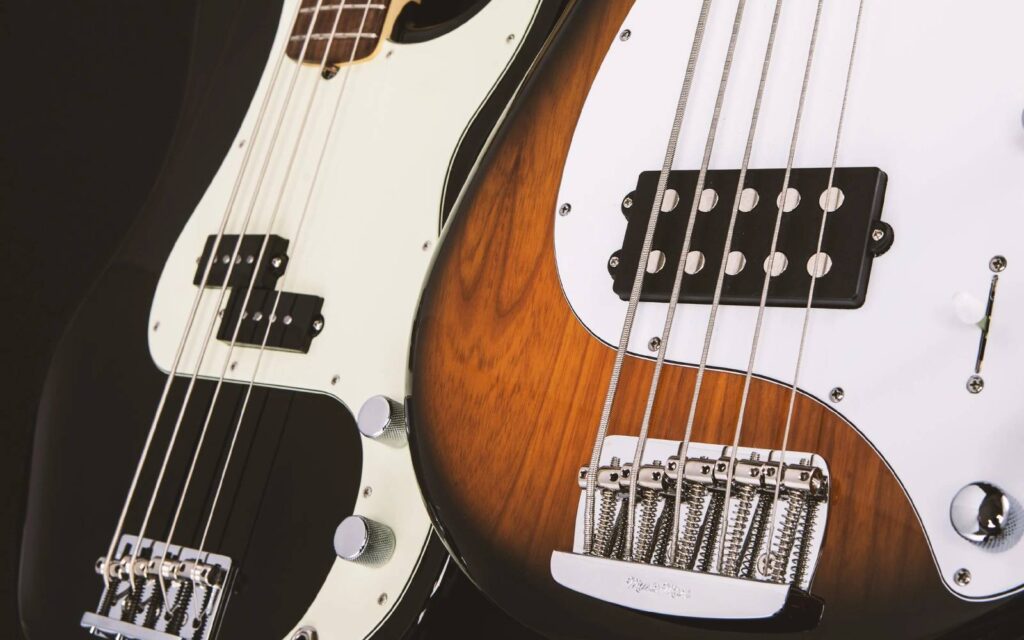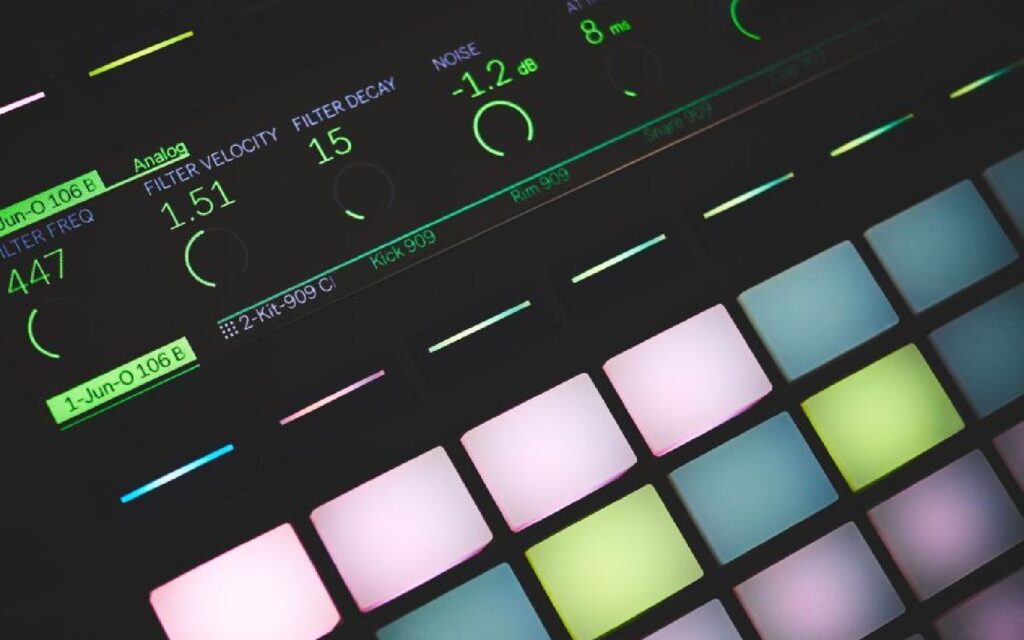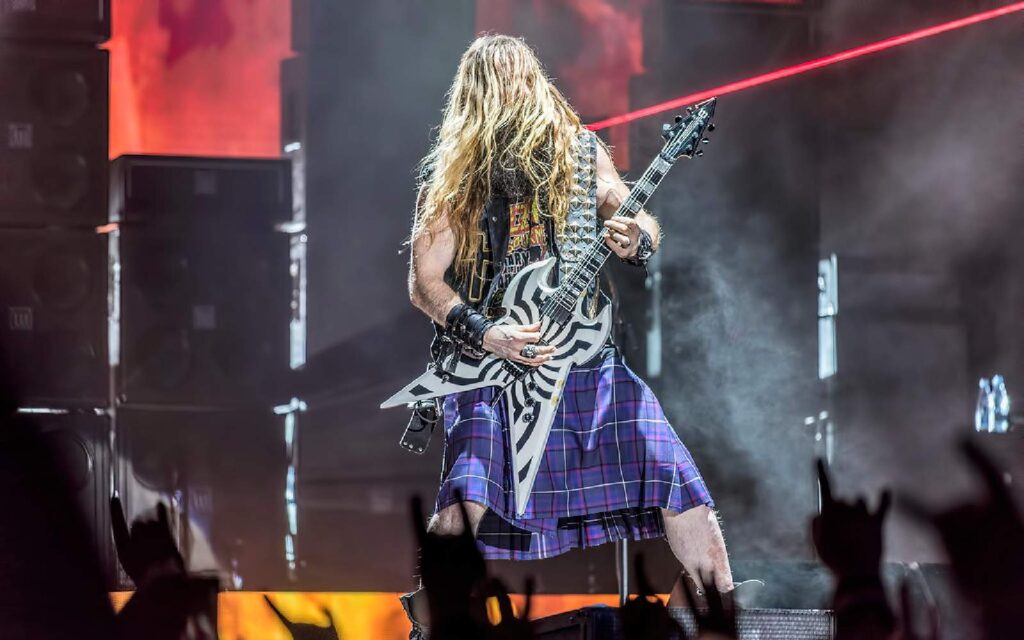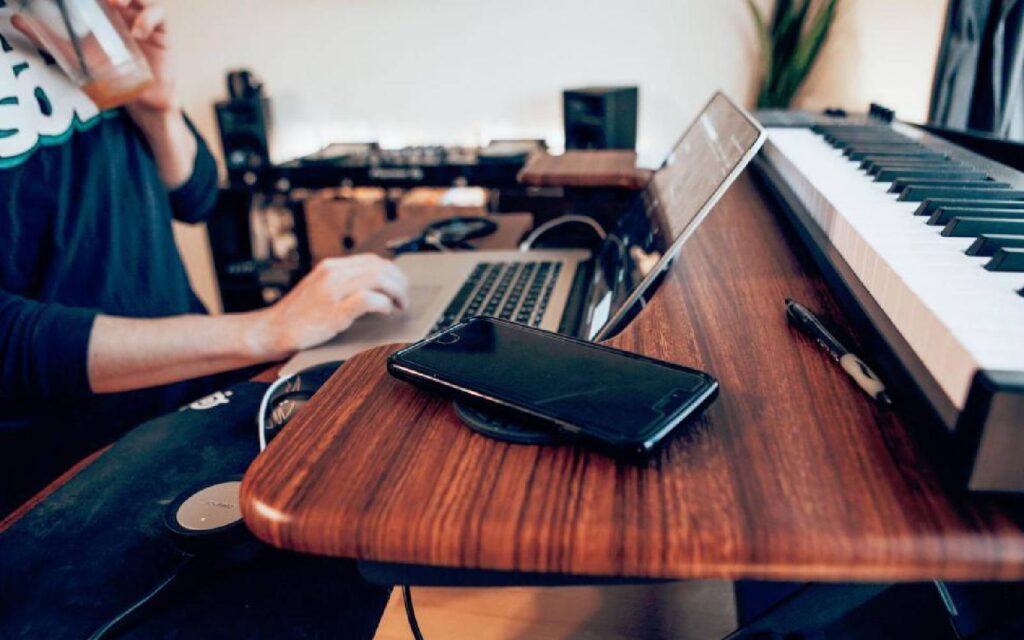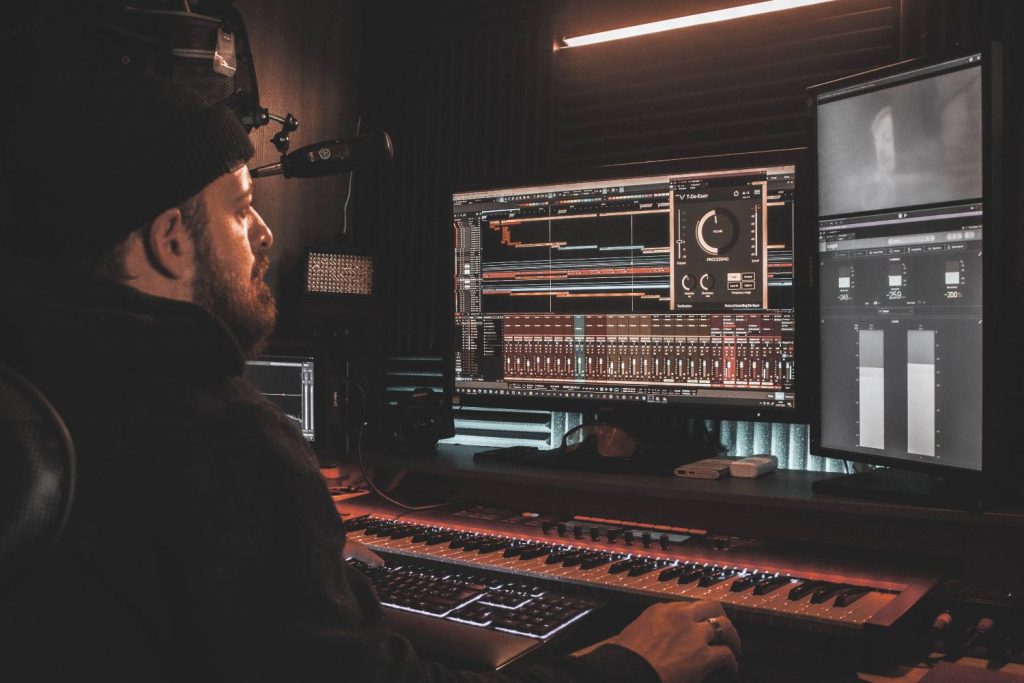St. South released the BIG SADS - EP in 2024, tying together a multitude of influences, sounds and influences into a cohesive ebb and flow.
Bringing together traditional sounds and refined, modern production, the sonic from St. South offering is akin to familiar folky and pop sounds, but revitalised with something new, something entirely their own.
Thanks for taking the time! Getting introductions out of the way, how do you define what you do?
Thanks so much for having me! I’m a singer/songwriter/producer – but musician works too.
I noticed a live demo of “a good year” on SMILE NOW CRY LATER – EP. Is this how you always demo songs?
Every time is different but as a songwriter and producer, there are usually two default writing methods I use:
- Using my songwriter brain: usually on my piano (or guitar), I’ll write the entire song/structure/chords before taking it to Ableton.
- Using my producer brain: writing the vocals to fit what I’ve already started producing in Ableton.
I actually recorded that demo in one take as a rough draft while experimenting with vocal effects. I’d been rinsing “Larabar” by Wet (one of my favourite songs of all time) and I was playing with ways to replicate the sped up/slightly distorted vocals in that song. I mic’d up my old upright with a pair of RØDE NT5s and recorded everything live while singing and playing painfully slow, holding each note.
The lyrics were still a W.I.P. so I just sang my favourite verse lines and the chorus before speeding the entire track up in Ableton. I had no intention of ever exporting it, but I loved the result so much and knew I needed to release it in some way. It had that magic most demos have before you overwork them, and I didn’t want it to be left behind.
This live demo is quite different from the version that ended up on the BIG SADS – EP, do songs and music always go through a lot of revisions as you hone and refine the sound?
Each song is different! Sometimes a song will literally write itself and feel finished super quickly, but more often there are multiple revisions. If I write a song on piano first, there’ll typically be at least 10 voice memo versions on my phone before I’m ready to record it. I think structure is everything for me; once I have the verse/chorus/bridge exactly how I want it, I can build out the production and have fun with it.
“A Good Year” is actually a perfect example of how extensive the revision process can be. I spent months working on the lyrics and structure at my piano before even touching Ableton. The process was purely cathartic while experiencing some of the worst grief/depression I’ve ever felt. By the time I was ready to record it to a click and start the production, I was emotionally exhausted by it and struggled to approach it with my usual production process. That’s when my label A&R stepped in and sent it to Luke MacDonald, who took my chords, structure and references and sent back the final production. I cried when I heard it because it was exactly how I’d always imagined it, but didn’t have the energy to execute it myself after sitting with it for so many months. While I loved the initial live demo, I knew that version wouldn’t have its chance at being a single, (but) the revision process helped transform it into what I felt it needed to be.
Can you speak a bit about the process from demoing through to the finished song?
When starting a new project, I usually treat myself to some new plugins and sample packs that feel right for the sound direction I’m heading in. I love combing through SoundCloud – some of my favourite and most used sample packs were actually found in the bios of small producers. Last month I bought imagiro’s shearwater piano plugin (he remixed “Better Days” on the new EP and his piano sounds are unreal).
My setup always centers around Ableton, and I spend a lot of time with Spectrasonic Keyscape, mostly recording on my little Korg microKEY, but sometimes on the Korg SV-1 when I need a weighted key for a ballad moment. Soundtoys’ Little Alterboy is my favorite for vocal processing at the moment. I used to use the TC Helicon Voicelive Touch 2 for vocals, but I sold it to pay for top surgery and I’ll forever regret letting it go! I also go absolutely feral for the Waves OneKnob plugin.
Once I have the chords down, I work on melodies – always trying to remind myself to demo with my good mic (BLUE Kiwi) in case I end up using any of the first vocal takes (which I usually do!). I’ll often use perc(ussion) loops as placeholders until I can flesh out my own pattern or send it to someone else for additional production.
For me, the demo phase is about trying everything – like drastically changing the BPM or completely flipping the arrangement. Sometimes I’ll spend hours exploring different options, only to return to the first project file thinking ‘What the hell, that was perfect as is.
What is exciting in the world of music at the moment?
Something I’ve noticed gradually shifting over the last few years is the move from high-budget production to more lo-fi DIY approaches – both musically and visually. COVID lockdowns definitely accelerated this; suddenly everyone was filming their own music videos and getting creative with home recording setups.
The rise of affordable plugins and audio interfaces has made professional-level production more accessible than ever. I’ve always recorded at home and used voice memo samples in my final recordings – incorporating room noise into my overall sound – but being forced to get even more creative during lockdown opened up my music world in new ways. In lockdown I bought The Sidecar Cassette Mod by FoldyMakes and had so much fun recording live piano demos onto it. It gave me that same Christmas-morning feeling I get with new plugins, but being able to step away from my desk and hold something real was exactly what I needed. There’s something really exciting about artists feeling empowered to get weird with how they source sounds, whether that’s through creative sampling or using unconventional gear.
On a cultural level, a huge shift I’ve witnessed is the rise of queer music and visibility of queer artists. When I released my first singles in 2014/15, I would lose sleep over deciding whether to use female pronouns when writing about my relationships. I was programmed to believe that being ‘out’ in my songs would narrow my audience. Now we’re seeing openly queer artists not just existing in the industry, but thriving and being celebrated. The Grammys are a perfect example – seeing artists like Victoria Monét and boygenius winning multiple awards last year, and this year’s recognition of Doechii, Chappell Roan, St. Vincent and Amy Allen (not to mention nominees like Billie Eilish, Brittany Howard, Clairo, Kehlani, Willow and Durand Bernarr). It really feels like authentic queer storytelling isn’t just accepted, it’s embraced. There will always be more work to be done, but it’s incredibly affirming seeing how far we’ve come over the span of my career.
Is your workflow entirely in the box or are you incorporating recorded acoustic instruments and spaces?
It kind of depends what headspace I’m in and what I’m currently listening to and feeling inspired by. If I’ve just bought a new plugin or sample pack, I’ll lock in to Ableton for days without reaching for an instrument. Other times I’ll crave time away from a screen and spend hours playing guitar or piano – hunting for chord patterns and melodies in the same way I did when I used to write folk music. The majority of the time it’s a nice balance between the two; incorporating acoustic guitar or live piano into a more produced electronic or lofi environment is one of my favourite ways to blend everything I love about making music.
Are you mixing and producing as you write, or is there a clear delineation between each step of the process?
When I’m writing a song I’m mixing and producing as I write. I need to already have a rough idea of how the mix will sound in order to finish producing it. I always have a mix engineer at the end of the process, but I’ll supply my own mix for reference and then we’ll flesh it out together. There have been times where I love my own mix, but the imposter syndrome convinces me to hand it over to someone else. It’s a vulnerable moment when you’ve been the sole creative behind a project, but it can also be really refreshing and exciting hearing it through their ears. Working with mix engineers has definitely helped me grow as a producer, even in cases where I’ve preferred my own mix (aka demo-itis). It can be hard wearing all of the hats in the process – hard not to be a perfectionist when the possibilities are endless – but collaboration definitely helps me get out of my own way when I hit those patches.
Thanks again for the time – what does the future hold for St. South?
Since writing the BIG SADS EP, my taste as a listener has grown so much, and I’m excited to start incorporating more of my personal taste into my own music. Not that I haven’t already, but when my dad died in 2020 I found it really hard to listen to singer-songwriter music. Grief has made me super sensitive to lyrical content, and sometimes I want to be able to lose myself in a song without feeling every emotion under the sun. It’s really changed the way I listen to music and I have to be strategic when it comes to listening to certain artists.
I can’t listen to Angie McMahon or Gang of Youths in the car on my way somewhere, otherwise I won’t actually make it out of the car. Feeling things so deeply is both a blessing and a curse, but I’m constantly learning different ways to harness it into my own music. House, Emotional Dance and Lofi-House have really held me through those moments of needing music without the risk of being cracked open (artists like Boston Bun, Godford, Killen, Folamour and Chaos In The CBD are some of my safest daily listens).
There’s one demo I’m working on for the next EP that’s different from anything I’ve ever produced, and maybe it’s a product of listening to too much Fred Again during the 2020 lockdown. There’s another track that’s currently completely acoustic – finished but still in the voice memo world – inspired by months of listening to Ryan Beatty’s Calico on repeat.
A lot of the music I love is unpredictable (Wet, Bon Iver, Sylvan Esso, Kyson), it bypasses the classic song structure and feels more like a journey. I used to write like this a lot when I started the St. South project, but was told by so many industry people along the way that every song needs a bridge. And maybe so! But I want to choose where and when to put the bridge, and whether I want listeners to go over or under it.
You can keep up with St. South here.
